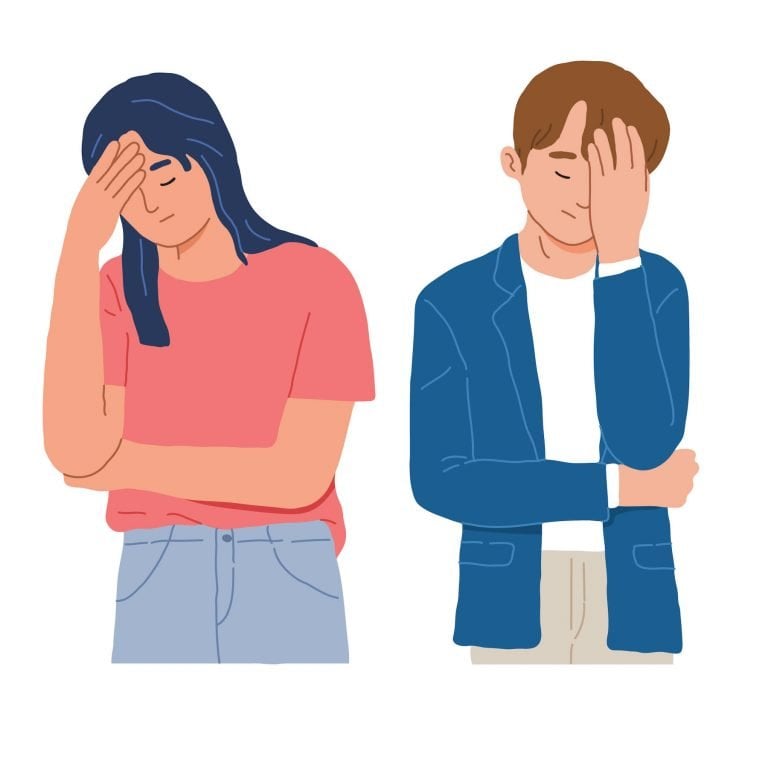Panic attacks and anxiety attacks are used interchangeably in popular writings on the internet. However, although they share some common symptoms, there are distinct clinical differences, notably:
Recognised diagnosis. Panic attacks are part of a recognised diagnosis in DSM 5, whereas anxiety attacks, although a popular term, are not mentioned in the diagnostic manual.
Present moment versus future-orientated. A person with a panic attack is focused on the present, feeling extreme symptoms in their body, whereas a person experiencing anxiety; symptoms are more future-orientated.
The intensity of symptoms. The symptoms of panic attacks are much more intense than anxiety.
Duration of symptoms. Panic attacks are short-lived, whereas anxiety can continue for a more extended period.
Panic Attacks Self-help

Dr Ryan’s online self-help course for Panic Attacks
Diagnostic differences
When you meet with a mental health professional with the hope of getting treatment for your symptoms, they assess to give a correct diagnosis.
Most clinicians, including myself, use a diagnostic manual called the Diagnostic and Statistical Manual of Mental Disorders or DSM (1). The current edition of DSM5 mentions panic attacks as a diagnostic class.
Anxiety attacks are not mentioned in the manual; however, anxiety is listed as a feature of anxiety disorders.
Panic attacks can occur on their own, or if they meet specific criteria, namely, last for more than six months and interfere with your daily life, you may be diagnosed with panic disorder.
Anxiety can occur as part of anxiety disorders and also panic disorders. Anxiety disorders are, for example;
- Generalised anxiety disorder
- Phobias
- Social anxiety disorder
- Panic disorder
- Agoraphobia
What is a panic attack?
According to the DSM-5, a panic attack is a discrete period of intense fear or discomfort in which four (or more) of the following symptoms develop abruptly and reach a peak within 10 minutes:
-Palpitations, pounding heart, or accelerated heart rate
-Sweating
-Shaking or trembling
-Sensations of shortness of breath or smothering
-Feelings of choking
-Chest pain or discomfort
-Nausea or abdominal distress
-Feeling dizzy, unsteady, lightheaded, or faint
-Sense of unreality (depersonalisation or derealisation)
-Fear of losing control or going crazy
What is anxiety?
Anxiety disorder symptoms are noted as
excessive fear and worry, which is challenging to control, in which at least some of the following symptoms are present for six months:
- Restlessness
- Fatigue
- Difficulty concentrating
- Irritable
- Muscular tension
- Difficulty with sleep
How to know the difference between panic attacks and anxiety attacks.
The symptoms of panic attacks, as shown in the table above, are much more intense and physical than the symptoms experienced with anxiety.
A defining characteristic of anxiety is worry about the future.
When a person has a panic attack, they are not worried about the future. During the attack, the person is very much focused on the present moment. Specifically the symptoms they feel in their body, they may feel as if they are having a heart attack or dying. They will also look different.
What does a panic attack look like?
During a panic attack, the person may look visibly distressed. They might:
- Sweat
- Shake
Have pale skin (blanching) - Have difficulty remaining still and want to leave wherever they currently are.
- Ask for help, ask someone to take them to the hospital if they have never had a panic attack before.
What does anxiety look like?
You could look at someone experiencing anxiety and not see many external symptoms.
Many of the symptoms experienced may be internal and, as such, not visible to see.
- Worry about the future
- Palpitations
Even though both conditions will look different, they share some common characteristics.
Common symptoms of anxiety and panic
- Palpitations
- Fear
- Worry

Difference in symptoms
As noted above, panic attacks are more intense than anxiety, and there are some key differences, namely;
Fear of dying. During a panic attack, the person may experience a real fear of dying in the present moment. This is not the case with anxiety. Although the person experiencing anxiety may worry about death, it is more a worry about something occurring in the future. It is more cognitive than panic attacks. A person experiencing a panic attack is afraid that death is imminent.
Panic attacks can include feeling unreal, depersonalisation and detachment. People may feel outside their bodies or watch themselves from a distance. Symptoms can also include excessive fear, a sense of detachment and loss of control.
Difference in intensity
A panic attack is always intense. Anxiety can be mild, moderate or severe.
When a person has a panic attack, their autonomic nervous system or fight-or-flight response is in control, this does not happen as readily with anxiety.
When the fight or flight response is operated, the physical symptoms experienced are intense and include: difficulty with breathing, the person may not be able to catch their breath, gulp or gasp for air or feel an extremely uncomfortable smothering sensation.
The term “anxiety attack” is a colloquial phrase coined by people who have anxiety to describe a type of attack that is more overwhelming and intense than just having anxiety.
What they may be describing is a panic attack.
Difference in duration
Panic attacks start abruptly, whereas anxiety is a slow burner, building up slowly.
Getting help
If you are worried about what you are feeling, hopefully, the explanations can give you a better idea of whether you are suffering from panic attacks or anxiety.
When you meet with a psychologist or other mental health professional, they shall be able to advise you on the best course of treatment following your diagnosis.
Getting a diagnosis
You will not be diagnosed with having anxiety attacks; as explained above, anxiety attacks are not a clinical diagnosis.
Your clinician will ask you a series of questions. You may complete several question-and-answer style questionnaires to help the psychologist arrive at the correct diagnosis by ruling out other conditions, including other anxiety disorders.
Treatment options
Counselling
Cognitive behavioural therapy is the recommended treatment for both panic and anxiety.
Self-help
Many self-help books and courses are available to help with anxiety and panic. You can work on these individually or as a part of a group.
Working with anxiety
This is a series of articles to help you apply CBT on your own
Go
Medication
Your doctor may prescribe medication such as selective serotonin uptake inhibitors or beta-blocker if talking therapy was not successful or if your panic attacks are so severe that they prevent you from making the most out of treatment.
Recap and outlook
Anxiety attacks are not a clinical diagnosis; anxiety is part of anxiety disorders. Panic attacks are listed in the mental health manual used to diagnose conditions. You can overcome anxiety disorders and panic by getting a correct diagnosis and starting proper treatment such as CBT.
- American Psychiatric Association. (2013). Diagnostic and statistical manual of mental disorders (5th ed.). https://doi.org/10.1176/appi.books.9780890425596
